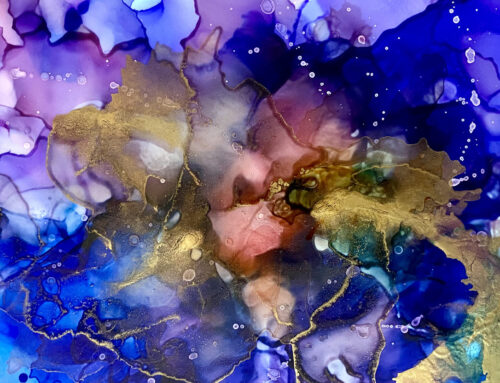Peace is one of those seemingly intangible, shape-shifting things in life, such as love, that molds our lives so intensely. It’s not necessarily something I can hold in my hand or perhaps physically give to you, and there are no words to adequately define the experience or even give a “correct” definition. Yet it is the foundation for all sacred wisdom. We continually seek the healing power and expression of peace because, at some level, we recognize this is where life is nudging us, and how we are being called to live it more fully.
Cultivating and living peace is knowing I am part of something larger and so is all life – I belong to you and with you. It is knowing that I matter, that you matter, and “to be” is to be related to you. Peace, regardless of what I think it should look like, doesn’t happen alone, it happens through our belonging.
The Season for Nonviolence, January 30 – April 4, is a national 64-day educational, media, and grassroots campaign dedicated to demonstrating that peace and nonviolence are powerfuls way to heal, transform, and empower our individual lives and our communities. As we enter into the Season for Nonviolence, and for the next seven weeks, I want to focus on the paradoxes of peace. Thinking of peace as a paradox often times makes the manifestation of peace challenging or confusing, yet like all spiritual truths, it is indeed a paradox.
Everything has different perspectives, sides and realities to it. A paradox is something that appears to be a contradiction, but from an expanded or different view, it is not a contradiction at all. The opposite of every profound truth is another profound truth, and each truth needs the other for a deeper, richer experience of life, love, God and peace.
Paradox means “beyond opinion, beyond belief.” The meaning exists beyond what I know. It’s not that the paradox is unbelievable, it’s just part of a larger order that I have yet to experience or know.
Peace is an invitation to stand in what we think we know and hold the creative tension that exists when another person tells us what peace is and how to achieve it and their explanation is seemingly so opposite of our own. Paradox is at the heart of all reality.
It’s scary to think about how much war has been waged over peace, and how much conflict has been borne over the idea of peace. So what do we mean when we say ‘peace’? How is it really defined, and how do you get it and live it? If you ask most people, they’ll tell you that they definitely want more peace and that peace is absolutely a good thing for our world. You’re also likely to get as many definitions of peace as the number of people you ask because if you dig a little deeper, you’ll find that people actually have different ideas about what peace looks like.
And ironically, you’ll probably hear quite a bit about how if we all had the same ideas of peace, we’d have more peace. Therein lies the first paradox – if we thought more alike, we’d have more peace. So my question is, who should think like whom?
Paradox #1: Individual and Community
Mother Teresa said that if we have no peace it is because we have forgotten that we belong to each other. Cultivating peace and living peace is knowing that I am part of something larger, that I belong to you and with you. It is knowing that I matter, that you matter, and “to be” is to be related to you, because peace, regardless of how you define it or what you think it should look like, peace doesn’t happen alone, it happens through our belonging.
And how do I cultivate and live peace? It’s learning that if I am not at peace in my own life, I will make conflict with those around me. If I don’t learn to face my own struggles I will never have compassion for someone else’s struggles, and if I don’t own my failures, I can never really be in immense awe of your success. Peace begins when I am willing to be still in the silence, sitting with my sufferings and joys, listening to what the spirit within is trying to teach me. And then be open to holding the tension between what I know and the mystery of the unknown in our togetherness.
Faith absolutely knows, and at the same time asks us to remember that we don’t know at all. Faith is content with this. Living in paradox is learning to move from thinking it is either/or to the understanding it is both/and. Everyone is a little bit right. Ultimately, a paradox is two truths that need each other.
Plato said that we are all born whole yet need each other to be complete. Everyone I know wants peace, yet how can I help someone else find it if I don’t have an understanding of what it means to them? It means different things to different people at different times in our lives, and because I believe in the interconnectedness of all life, then the fulfillment of peace is found in helping each person find their own peace – and then together we bring it into manifest form.
PRACTICE:
Take some time each day in the quiet. With a still mind and heart, ask yourself, “How do I define peace? Is it about safety, calmness, confidence, surrender, joy, love, etc.?”
Listen to how others talk about peace – on the news, at work, friendships, family members… How is your definition different? How can you befriend what you may not agree with?
Take a few minutes to journal the answers to these questions:
- When I focus on cultivating peace within myself, what goodness unfolds in my life? What does my life look like?
- When I focus on peace outside myself, cultivating it in my community, what goodness unfolds for the greater whole?
- If I focus too much on peace within myself to the unwitting neglect of helping others find their own peace, what does life look like? How do I feel it in my body?
- If I focus too much on having peace outside myself, in my community, to the neglect of my own inner journey, what happens in my life?
For resources on how you can practice peace visit the Association for Global New Thought 17th Annual Gandhi-King Season for Nonviolence.







